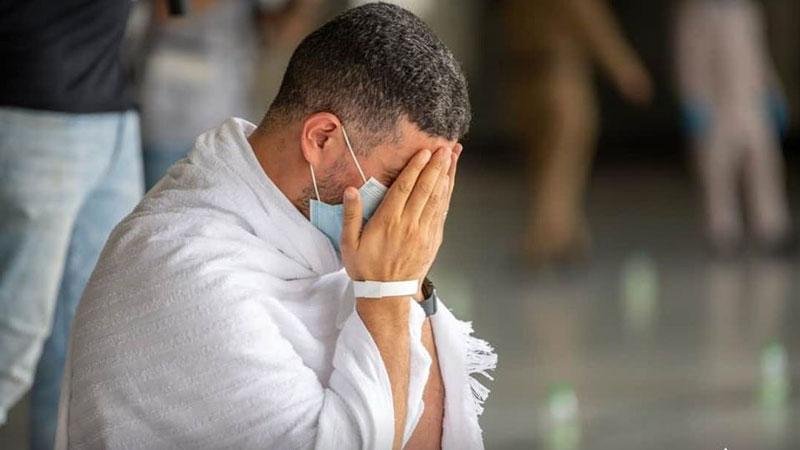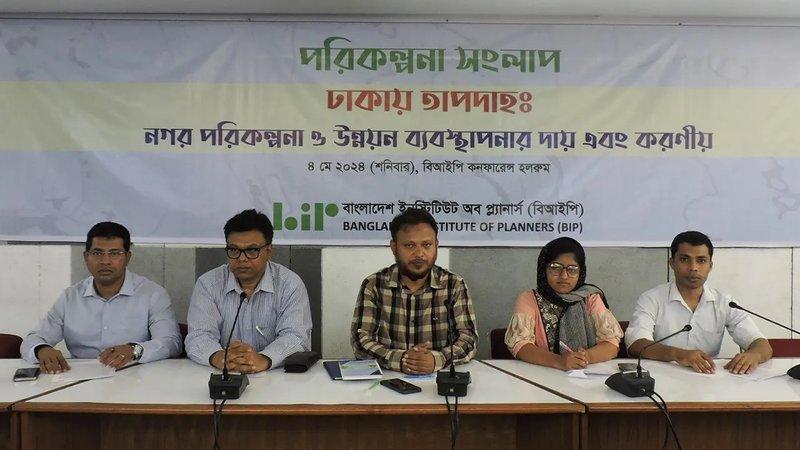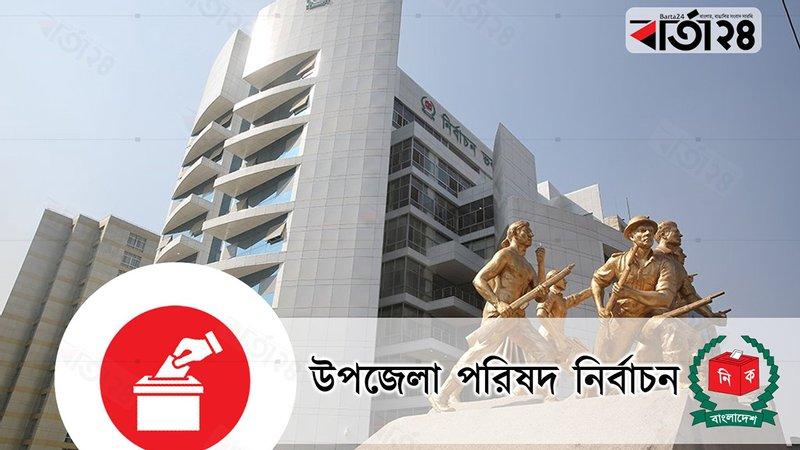This year’s Hajj - in an exceptional environment!

Photo: Collected
Dhaka: Hajj - the annual Muslim pilgrimage to Mecca - has begun, but under dramatically different circumstances due to the coronavirus outbreak.
‘Labbaik Allahumma Labbaik’, ‘Labbaika La Sharika Laka Labbaik, Innal Hamda, One Regulator Laka Wal Mulk. La Sharika Luck’. 'In the other year, on the day of 9 Zilhaj, Arafat Maidan used to resound with the sound of talbiyyah uttered by millions of voices. This time the situation is different. Due to the epidemic, no one from any country outside Saudi Arabia got the opportunity to perform the holy Hajj. Only ten thousand pilgrims are performing Hajj this time.
Due to war and epidemics, the Hajj was held in the presence of a limited number of people before. However, since the establishment of the Saudi monarchy, the Hajj has been celebrated without any hindrance every year. This time, a different type of Hajj has been added to that history.
The Hajj has started on Wednesday (July 29) morning with unprecedented hygiene protection and orderly management. At the end of the four-day quarantine in Makkah, this morning, Hajira came to Makkah, about 75 km from Makkah, wearing Ihram from the Miqat called 'Karnul Manazel', and came to Makkah at the end of the Tawaf Kudum. The main formality of Hajj has started through Mina Yatra.
This is the first time in almost 100 years that the Saudi government has imposed strict restrictions on the Hajj due to the coronavirus epidemic. Unable to perform Hajj, millions of devout Muslims in different parts of the world are suffering from deep distress. This time an unknown scene has been seen in the formality of Tawaf Kudum. There is no crowd. There is no busyness of the pilgrims wearing Ihram in the streets of Makkah. The formality of Hajj, one of the pillars of Islam, has started with a lot of sadness during the corona period.
10,000 pilgrims performed Johar prayers in Mina on Wednesday. This time in Mina, the attendants did not stay in the familiar tent. They are kept in a high quality tower in Mina according to the hygiene rules. Each Haji was busy reciting the Qur'an, performing supererogatory acts of worship and reciting jikr throughout the night.
After performing five daily prayers in Mina, they will leave Mina on Thursday (July 30) after Fajr at Arafat ground. Arafat ground is the main activity of Hajj. In last year, Arafat took up positions across the vast plains, but this time he had to stay in a special tent. A sermon will be delivered to the pilgrims from Namira at the mosque adjacent to Arafat ground at 12:25 local time in Saudi Arabia.
This time Shaykh Abdullah bin Sulaiman Al Mania will deliver the Hajj sermon. He is the oldest Hajj Khatib. This year, the Arabic sermon of Hajj will be translated and broadcast in nine more languages including Bengali. Necessary steps have been taken for this purpose. The nine languages are English, Malay, Urdu, Persian, French, Mandarin, Turkish, Russian and Abyssinian. In 2019, translation of Hajj sermon was published in 5 languages.
Standing on the ground of Arafat, the last and greatest prophet, Hazrat Muhammad (PBUH) gave the historic speech of the Farewell Hajj. After this speech addressed to millions of people, there was a proclamation from Allah for the perfection of the religion. The speech is still given while maintaining that continuity. The speech highlighted the overall situation in the world. Necessary directions were given for the peace and prosperity of the Muslim Ummah. Attendees began to weep with the mindset of sacrificing their lives for the great Allah in an emotional atmosphere. They pray for forgiveness for their sins and pray to Allah for the happiness and peace of their families, society and the state.
Hajis will leave for Muzdalifah from Arafat ground without praying Maghrib in the evening. Going there, Maghrib and Esha prayers will be performed together in different Iqamah in one Azan. Hajis will stay overnight in Muzdalifah under the open sky and after performing Fajr prayer there, they will stay for a while before sunrise and then go back to Mina to throw stones at Jamarat. On 10th Zilhaj they will come to Mina from Muzdalifah and will throw 6 stones in the big jamra and will complete this work before Johar. Hajis will also complete the sacrificial work by throwing stones in a big jamara. At the same time, they will shave their heads and become halal from the clothes of Ihram.
11 and 12 Zilhaj will complete the pilgrimage before sunset and stay in Mina for these two days, throw a total of 21 stones in small, medium and large jamaras and leave Mina before sunset in 12 Zilhaj. Hajis will then complete the Hajj through the farewell Tawaf.
Authorities say 30 percent of the current Hajj participants are Saudi nationals and 70 percent are Saudi expatriates. Foreign nationals include representatives from 160 countries.
The Covid-19 pandemic had left this year's Hajj uncertain. The Saudi government has suspended prayers in 90,000 mosques in the country following the outbreak of the coronavirus in Saudi Arabia. The congregation was open in the presence of a limited number of people in the Masjid Haram and Masjid Nawabi. Later, all the mosques in the country, including the Nawabi Mosque, were opened for the Jamaat, but the general public is still not allowed to pray in the Haram Mosque. After a long time, 10,000 pilgrims entered the Haram of the mosque for Tawaf Kudum on Wednesday and completed the Tawaf formality. Saudi Arabia has been under lockdown for three months in a row to control the coronavirus outbreak. At that time, a 24-hour curfew was imposed in most cities of the country.
Participants in this year's Hajj have had their body temperature and virus tested immediately after arriving in Makkah. Quarantine has been arranged for them before and after the start of Hajj.
Hajis will then complete the Hajj through the farewell Tawaf.
Authorities say 30 percent of the current Hajj participants are Saudi nationals and 60 percent are Saudi expatriates. Foreign nationals include representatives from 180 countries.
The Covid-19 had left this year's Hajj uncertain. The Saudi government has suspended prayers in 90,000 mosques in the country following the outbreak of the coronavirus in Saudi Arabia. The congregation was open in the presence of a limited number of people in the Masjid Haram and Masjid Nawabi. Later, all the mosques in the country, including the Nawabi Mosque, were opened for the Jamaat, but the general public is still not allowed to pray in the Haram Mosque.
After a long time, 10,000 pilgrims entered the Haram of the mosque for Tawaf Kudum on Wednesday and completed the Tawaf formality. Saudi Arabia has been under lockdown for three months in a row to control the coronavirus outbreak. At that time, a 24-hour curfew was imposed in most cities of the country.
Participants in this year's Hajj have had their body temperature and virus tested immediately after arriving in Makkah. Quarantine has been arranged for them before and after the start of Hajj.
Due to the epidemic, the National Disease Prevention and Control Authority of Saudi Arabia has issued special hygiene rules for this year's Hajj. According to the rules, Hajj pilgrims are not allowed to kiss or touch the Kaaba and black stones and must use sterile packaged stones beforehand to throw stones at the devil which has been provided to the pilgrims.
Hajj pilgrims and those performing Hajj must wear a safety mask and put it in a specific place after use. Wherever the pilgrims gather, the distance between the two should be at least one and a half meters. A team of 50 people has been formed to observe the health protection rules. They will be led by a health officer. They will ensure hygiene.
Hajj without a Hajj permit is prohibited in the holy places of Mina, Muzdalifah and Arafat on the fifth day of Hajj up to 12 Zilhaj. They are being arrested as soon as anyone from another country comes to attend the Hajj formalities. On Wednesday, 244 people were arrested for climbing the Minar hill to attend the Hajj formalities.
Hajj is one of the five pillars of Islam. It is obligatory for every physically and financially well-off Muslim to perform Hajj once in a lifetime. Hajj is a holy milestone for the world's 1.8 billion Muslims. Many people save money for Hajj for the rest of their lives. Many of those who could not perform Hajj this time may not get a chance to fulfill an important dream of life. Because a large part of the Hajj participants are elderly. However, Islamic scholars have said that even if they do not get the opportunity this time, they will keep the intention of Hajj in the future and will be ready in that way. It is better to talk about the will of one's Hajj, to bequeath it to the heirs. Even if he dies without necessarily performing Hajj, it is as if a replacement Hajj is performed for him.
The Saudi government has made extensive preparations for the pilgrims to perform Hajj without any hindrance. Meanwhile, the Saudi Interior Ministry said it was recruiting Hajj security officials, civil defense personnel, security personnel, doctors, nurses, paramedics and media personnel. Several hospitals, 200 ambulances and a few helicopters are ready.
In normal times, it is estimated the pilgrimage contributes 12bn dollars to Saudi Arabia's gross domestic product (GDP) each year.
Already facing a sharp downturn in oil prices due to a collapse in global demand driven by coronavirus lockdowns, Saudi Arabia has instituted austerity measures, including the tripling of a value added tax and cuts to civil servants' allowances.
The virus has also battered pilgrimage-reliant businesses that support hundreds of thousands of jobs in Mecca, from travel agents to street barbers and souvenir shops.
The International Monetary Fund expects the kingdom's GDP for 2020 to contract by 6.8 percent as both the pandemic and slumping oil prices take a toll.















